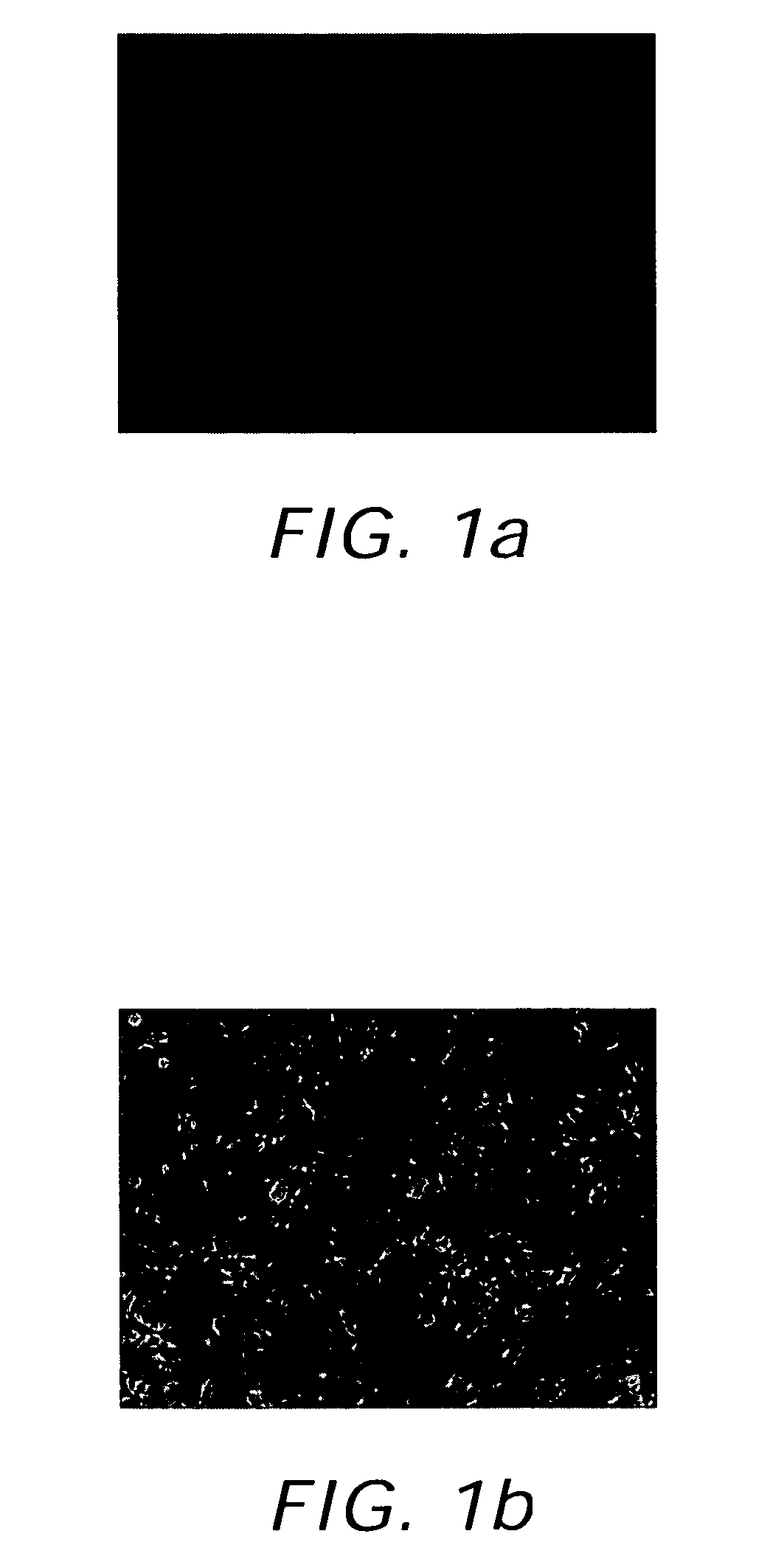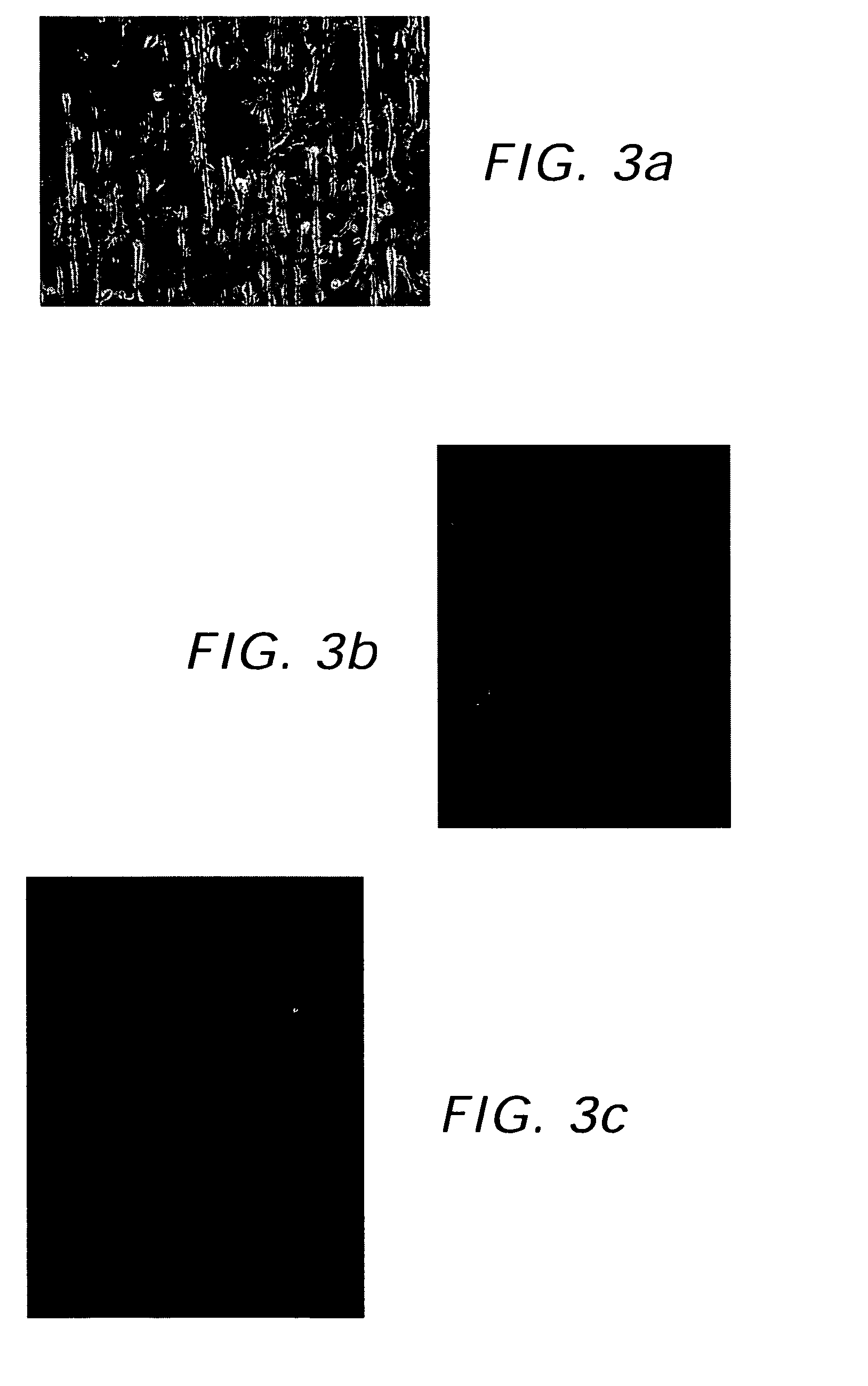Therapeutic reprogramming, hybrid stem cells and maturation
a technology of hybrid stem cells and stem cells, applied in the field of therapeutic reprogramming, hybrid stem cells and maturation, can solve the problems of reducing cell differentiation ability or induced apoptosis, slowed the progress of stem cell research using embryonic stem cells, and limited types in number, and achieves the effect of minimal oxidative damag
- Summary
- Abstract
- Description
- Claims
- Application Information
AI Technical Summary
Benefits of technology
Problems solved by technology
Method used
Image
Examples
example 1
Maturation—Pre-Embryo, Embryo Transplantation
[0118] Embryonic stem cells (ESC) derived from a strain 129 / SvJ mouse are injected into 3.5 days-post-conception C57BL / 6J blastocysts. Within the blastocyst is the inner cell mass niche that contains the epiblast, which is responsible for germ layer establishment and ultimately all cells in the embryo. The ESC cells recognize this niche and respond by being directed appropriately to contribute to the embryo proper. After a short culture period, the blastocysts are transferred back into a pseudopregnant female and allowed to develop to term. The ESC cells under the direction of the inner cell mass and the cellular environment mature into different stem cells and support cells that are required during particular periods of embryogenesis and organogenesis. Depending on the ability of the ESC cells to respond to the maturation factors present during embryogenesis and organogenesis, chimeric mice will be born with differing levels of chimeris...
example 2
Maturation of Embryonic Stem Cells in the Developing Embryo
[0119] In this example, embryonic stem cells are matured in the developing bone marrow niche. Blood cell development, called hematopoiesis, passes through discrete stages in specific tissues in the developing embryo before converging in the bone marrow, where it continues throughout adulthood. In a developing embryo, hematopoietic stem cell precursors develop first in the yolk sac and a region called the aorta-gonad-mesonephros (AGM). During the course of embryogenesis and organogenesis, the hematopoietic stem cell precursers migrate to the liver, and later to the spleen, before finally colonizing the bone marrow prior to birth. In this particular example, hematopoietic, mesenchymal stem cells and multipotent adult progenitor cells (MAPCs) are generated that can be isolated from a post-natal organism.
[0120] An embryonic stem cell (ESC) is derived from a strain 129 / SvJ mouse are transfected with a fluorescent reporter gene ...
example 3
Therapeutic Cloning and Maturation
[0122] The preparation of human primordial sex cells (donor cells) responsive to maturation signals for therapeutic cloning are described. In some instances the donor cells need an additional step to prepare for maturation. The process involved in preparing primordial sex cells (PSC) from other mammals, including humans, is similar to that described here with the possible exception of modifications to media or chemicals that are specific to that particular species.
[0123] Oocytes are collected after ovarian stimulation and matured (metaphase II) in vitro in G1.2 medium (Vitro Life, Goteborg, Sweden). Oocytes with a first polar body are selected for enucleation. Enucleation is performed in HEPES-buffered Ca2+-free CR2 medium with amino acids (hCR2aa) supplemented with 10% FBS and 5 ug / mL cytochalasin B (Sigma). The oocyte is held in place with a holding pipette and small slit is made on the zona pellucida with a fine needle. The first polar body and...
PUM
| Property | Measurement | Unit |
|---|---|---|
| Time | aaaaa | aaaaa |
| Mechanical properties | aaaaa | aaaaa |
| Therapeutic | aaaaa | aaaaa |
Abstract
Description
Claims
Application Information
 Login to View More
Login to View More - R&D
- Intellectual Property
- Life Sciences
- Materials
- Tech Scout
- Unparalleled Data Quality
- Higher Quality Content
- 60% Fewer Hallucinations
Browse by: Latest US Patents, China's latest patents, Technical Efficacy Thesaurus, Application Domain, Technology Topic, Popular Technical Reports.
© 2025 PatSnap. All rights reserved.Legal|Privacy policy|Modern Slavery Act Transparency Statement|Sitemap|About US| Contact US: help@patsnap.com



